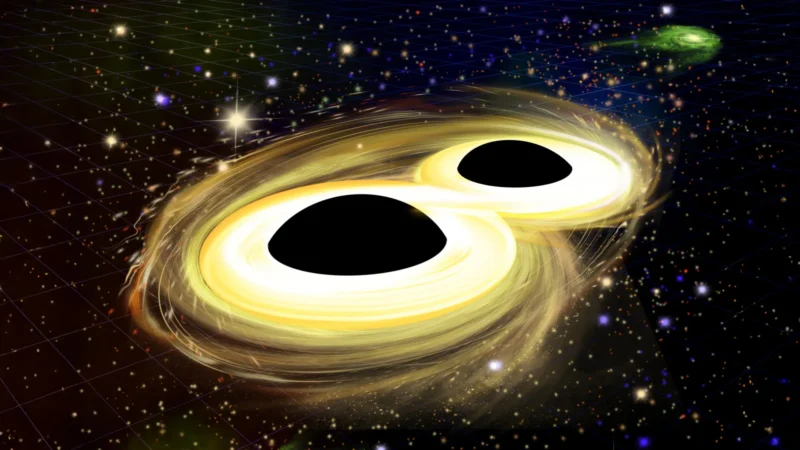Fast Facts
-
Historic Black Hole Merger: The LIGO-Virgo-KAGRA (LVK) Collaboration detected the most massive black hole merger to date, forming a black hole over 225 times the mass of the Sun, identified as GW231123, on November 23, 2023.
-
Challenging Formation Theories: The merging black holes, with masses of approximately 100 and 140 times the Sun, defy standard stellar evolution models, suggesting a potential history of prior mergers among smaller black holes.
-
Technical Breakthroughs Required: The rapid spinning of the black holes challenges current gravitational-wave detection and theoretical models, demanding advanced techniques for accurate signal interpretation.
- Future Research Opportunities: Continuous analysis of GW231123 is expected to reveal complex dynamics and implications, with data to be shared via the Gravitational Wave Open Science Center for further exploration by the scientific community.
Rethinking Black Hole Formation
In a groundbreaking discovery, scientists have detected the merger of two extraordinarily massive black holes. Using data from LIGO and Virgo, researchers observed the event designated GW231123 on November 23, 2023. The merger produced a final black hole over 225 times the mass of our Sun. This colossal mass challenges existing models of black hole formation. Traditionally, stellar evolution theories predicted that black holes could not reach such sizes. Experts suggest that these black holes may have formed from earlier mergers of smaller black holes. This finding invites us to rethink how we understand the life cycles of such cosmic giants.
Furthermore, the rapid spinning of these black holes complicates the analysis of gravitational waves. The spins of approximately 100 and 140 times the Sun’s mass push the limits of what we think is possible under Einstein’s theory of general relativity. Researchers must refine their models to interpret these complex signals accurately. This challenge offers an exciting opportunity for advancements in gravitational-wave astronomy. Each observation not only enhances our understanding but also reveals how much we have yet to learn about the universe.
Advancing Gravitational-Wave Technology
The GW231123 event signifies a leap in our gravitational-wave detection capabilities. Gravitational-wave detectors like LIGO and Virgo measure minute distortions in spacetime caused by cosmic events. The ongoing fourth observing run (O4) demonstrates the potential of these technologies to reveal new cosmic phenomena. As researchers continue refining analysis techniques, they push the boundary of what is possible in astronomy.
Moreover, the excitement surrounding GW231123 extends beyond its discovery. This event will be presented at the GR-Amaldi meeting in Glasgow in July 2025, showcasing the collaborative efforts in the scientific community. By sharing calibrated data with the Gravitational Wave Open Science Center, researchers will foster further exploration and analysis. Each finding contributes to our understanding of the universe, encouraging a collaborative journey into the unknown. With each discovery, we not only expand our knowledge but also deepen our connection to the cosmos.
Expand Your Tech Knowledge
Dive deeper into the world of Cryptocurrency and its impact on global finance.
Explore past and present digital transformations on the Internet Archive.
TechV1

